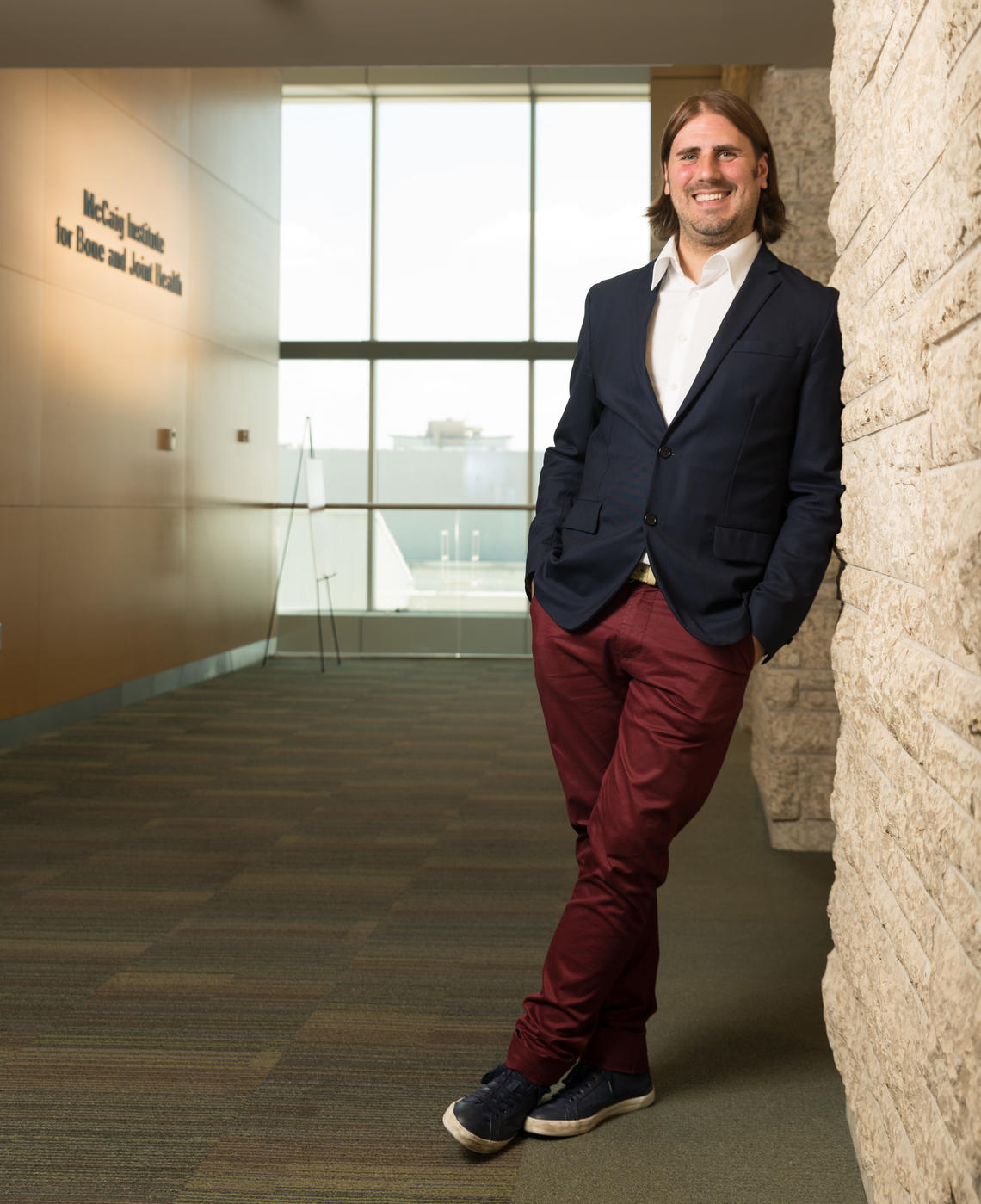Jan. 9, 2019
Understanding the complex role of protein interactions in inflammatory diseases
When Dufour was playing junior hockey and travelling between small towns for games, he would read medical books and articles on quantum physics. He is a musician, artist, writer and wine connoisseur. And he studies one of the most complex areas of health research – proteomics - the global-scale study of proteins.
Proteins are large molecules that do most of the work in cells. They are essential to the function and regulation of every tissue in the human body – and there are millions of them. Dufour’s research focuses on proteases, or molecular scissors that cut proteins to modify their functions. “There are 700 proteases and protease inhibitors in the human body,” he says. “If one protein dysfunctions, it can have a profound impact on our health.”
Dufour looks at one protease at a time. He will “knock-out” or turn-off a certain protease to see what the impact is on proteins and their global interactions. “When you remove one part of the system, you still have the network. Not everything will collapse, and that’s where it becomes complicated – that’s when you have to be creative.” To address the challenge, Dufour utilizes multiple bioinformatics tools to analyze the copious amount of data.
The bigger picture
Because proteases can cause a deregulation or upregulation of a disease, they are of major interest to pharmaceutical companies. But before effective drugs can be developed, it is important to fully understand what the targeted protease does. “Proteins can inhibit drug actions or cause side effects,” says Dufour. “For example, in arthritis you have a lot of chronic inflammation, so you want to turn that down. But over time, it can transition to fibrosis or sclerosis, and that creates a whole new problem.”
Dufour’s work will also provide vital information for physicians who prescribe medications that target proteases. “I hope to provide an explanation for why clinicians should go with one drug over another,” says Dufour. “With our approach, we can paint a very big picture of what’s going on at a cellular level.”
Tidbits:
“My favourite thing about working at the McCaig Institute is how friendly and helpful people have been. Here, everyone has different expertise, but we all fall together to look at the big picture and answer new scientific questions related to bone and joint inflammation. We all see different aspects from both inside and outside the box, and we try to fit them together.”

Antoine Dufour
